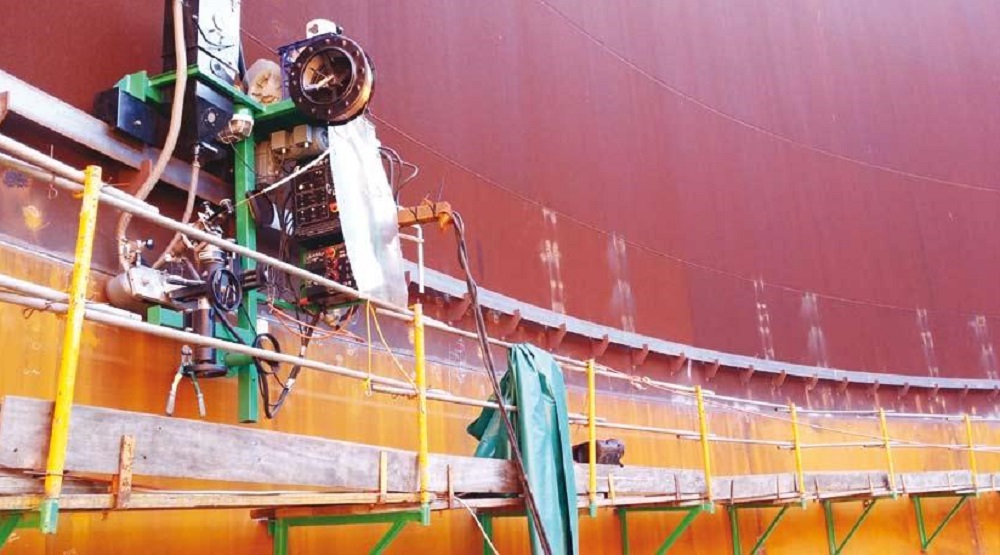Comprehensive Tank Welding Evaluation for Industrial Safety And Security and Regulatory Compliance
Making sure commercial safety and regulative conformity within the world of container welding evaluations is an important aspect of maintaining operational stability and mitigating possible risks. The precise assessment of weld top quality, material density, and total container condition is critical in securing versus architectural failings and ecological risks. By diving right into the details of thorough tank welding inspections, a deeper understanding emerges of the diverse methods utilized to maintain market requirements and maintain security procedures.
Significance of Container Welding Inspections
Conducting periodic and thorough tank welding inspections is essential in ensuring the structural integrity, safety standards, and governing conformity of industrial tanks. These inspections play a crucial duty in recognizing any potential defects or weak points in the welded joints that could endanger the total stability of the tank. By detecting these concerns beforehand, business can take proactive actions to resolve them quickly, thereby protecting against expensive repair work, ecological contamination, or, in the worst-case situation, devastating failings.
Routine tank welding assessments also aid organizations adhere to market regulations and criteria stated by authorities such as the American Oil Institute (API) or Occupational Safety and Wellness Administration (OSHA) Failing to meet these needs can result in penalties, lawful repercussions, and even the suspension of operations. Tank Welding Inspection Service. Consequently, investing in detailed tank welding assessments not only safeguards the wellness of employees and the surrounding atmosphere however also shields the company's online reputation and profits in the future
Trick Components of Weld Quality Evaluation
Ensuring the high quality of welds entails a meticulous assessment of vital components that add to the structural stability and integrity of industrial containers. One essential element of weld top quality analysis is the examination of weld penetration. Appropriate infiltration is crucial as insufficient penetration can cause weld flaws and endanger the toughness of the joint. Additionally, the weld's profile should be evaluated to make sure that it satisfies the specific requirements in regards to size and shape. The presence of any suspensions, such as fractures, porosity, or incomplete fusion, must be completely examined as these can deteriorate the weld and boost the probability of failure. Additionally, the general weld appearance is also a key part of top quality analysis, as it can show the existence of problems or disparities in the welding process. By comprehensively evaluating these vital parts, inspectors can help assure that bonded joints satisfy the necessary standards for safety and security and regulative compliance in industrial container building and construction.
Product Thickness Examination Techniques
In the context of weld top quality evaluation, an indispensable aspect to take into consideration is the usage of product thickness examination techniques. Precise measurement of material thickness is critical in guaranteeing the architectural integrity and security of bonded containers. Various non-destructive testing (NDT) approaches are employed for evaluating product density, including ultrasonic testing, radiographic screening, and magnetic fragment inspection. Ultrasonic testing involves the usage of high-frequency acoustic waves to determine material density by determining the moment considered the acoustic waves to travel through the material and show back. Radiographic screening makes use of X-rays or gamma rays to produce images revealing worldly density. Magnetic fragment evaluation is efficient for identifying surface and near-surface defects that may impact material thickness. These methods not just aid in reviewing the density of products but also aid in identifying any potential flaws or stoppages that can endanger the weld top quality and total honesty of the container framework. By using these product density analysis strategies, sectors can make sure conformity with security requirements and policies, thus enhancing overall functional safety and dependability.
Storage Tank Condition Exam Approaches
A crucial element in keeping the stability and safety of bonded tanks navigate to these guys is the complete evaluation of container conditions via dependable inspection techniques. Container condition exam methods play a critical function in making certain the structural strength and functional performance of commercial containers. Aesthetic evaluation is a key method utilized to analyze the external problem of tanks, looking for indications of corrosion, leakages, or physical damage. Furthermore, non-destructive screening techniques such as ultrasonic testing and radiographic testing are used to identify interior defects, weld flaws, and product degradation that may jeopardize the container's efficiency. Tank Welding Inspection Service. Furthermore, magnetic particle assessment can recognize surface area cracks and defects that are not visible to the naked eye. These assessment approaches give valuable insights into the total wellness of the container, enabling early detection of potential issues and helping with timely Visit Website maintenance or repair work to make sure conformity with security guidelines and market requirements. Routine assessments utilizing these techniques are necessary for protecting against devastating failures and guaranteeing the long-term reliability of welded containers.
Benefits of Routine Inspection Practices
Routine inspection methods not just protect versus possible issues identified during storage tank problem examination approaches but likewise work as proactive procedures in promoting the structural stability and functional performance of welded storage tanks. By carrying out normal evaluations, industrial centers can identify any type of indicators of deterioration, cracks, leaks, or other flaws in the storage tank welds promptly. This early detection allows prompt fixings or upkeep interventions, preventing little problems from intensifying right into larger, much more expensive issues that might jeopardize safety and security or bring about governing non-compliance.

Conclusion

Finally, thorough tank welding assessments are essential for making sure commercial safety and regulatory compliance. By performing normal examinations and assessments of weld high quality, product density, and container condition, organizations can determine prospective threats and prevent costly mishaps. Carrying out an aggressive technique to assessment techniques can aid maintain the structural integrity of tanks, safeguard the atmosphere, and make sure the security of employees and the bordering area.
